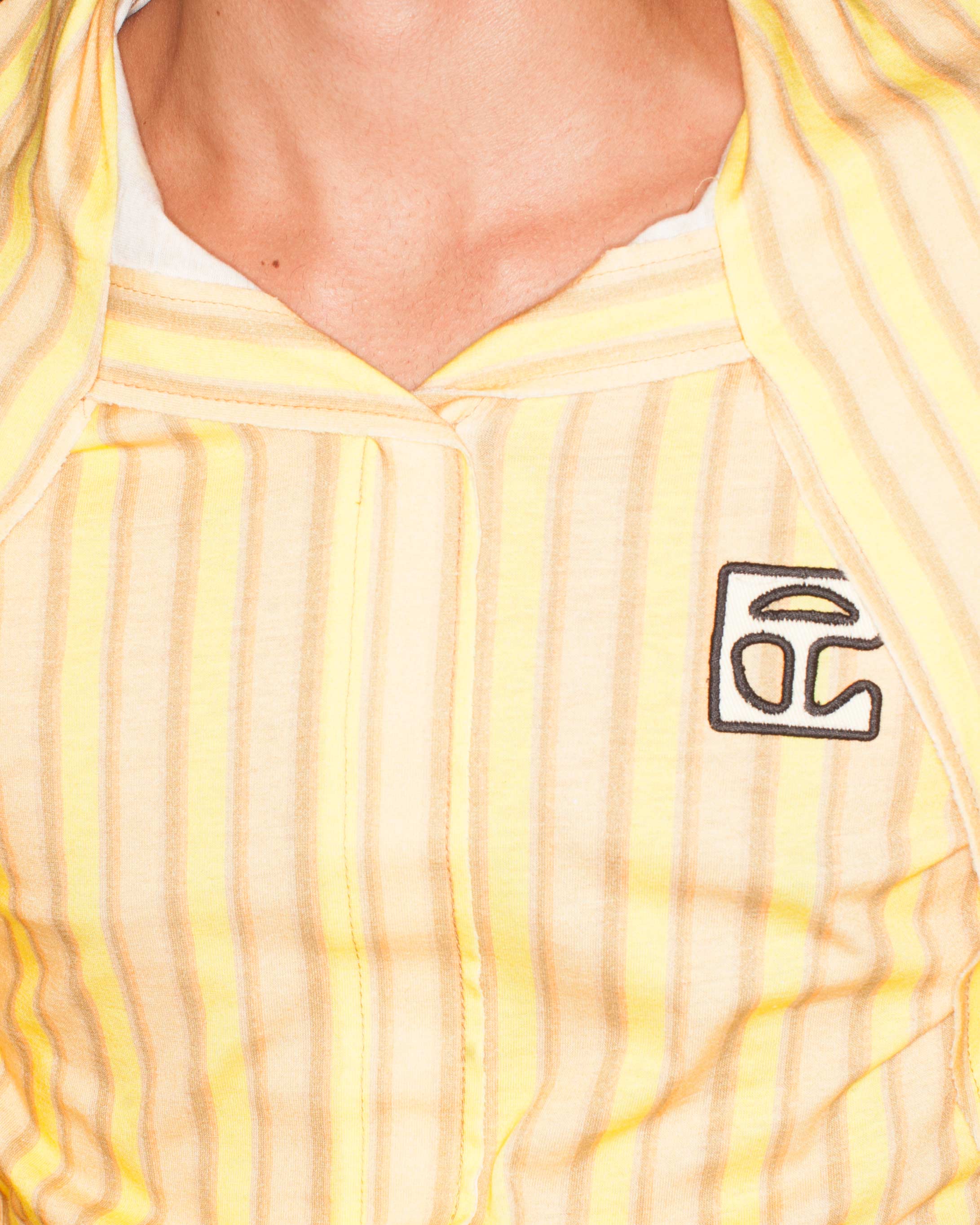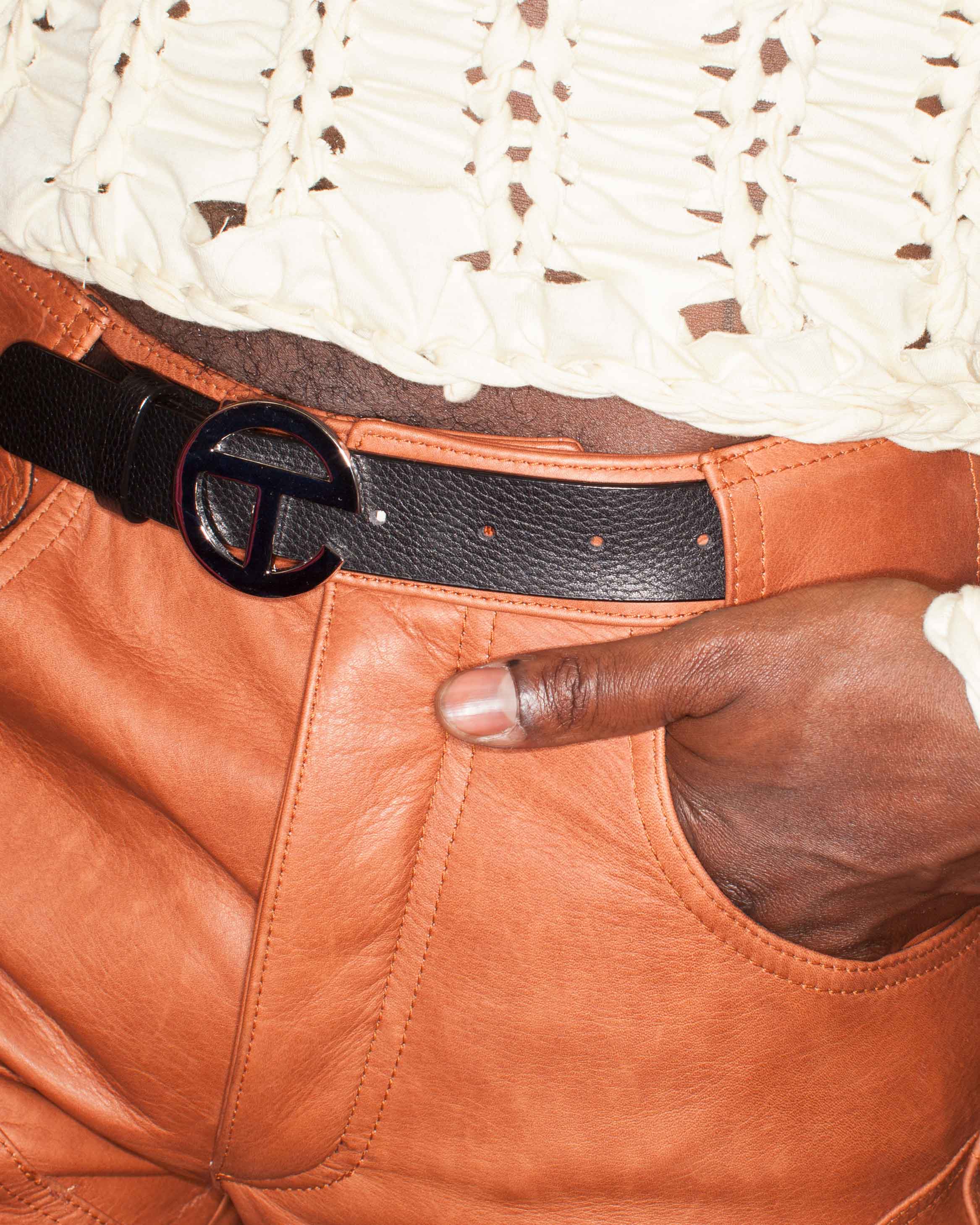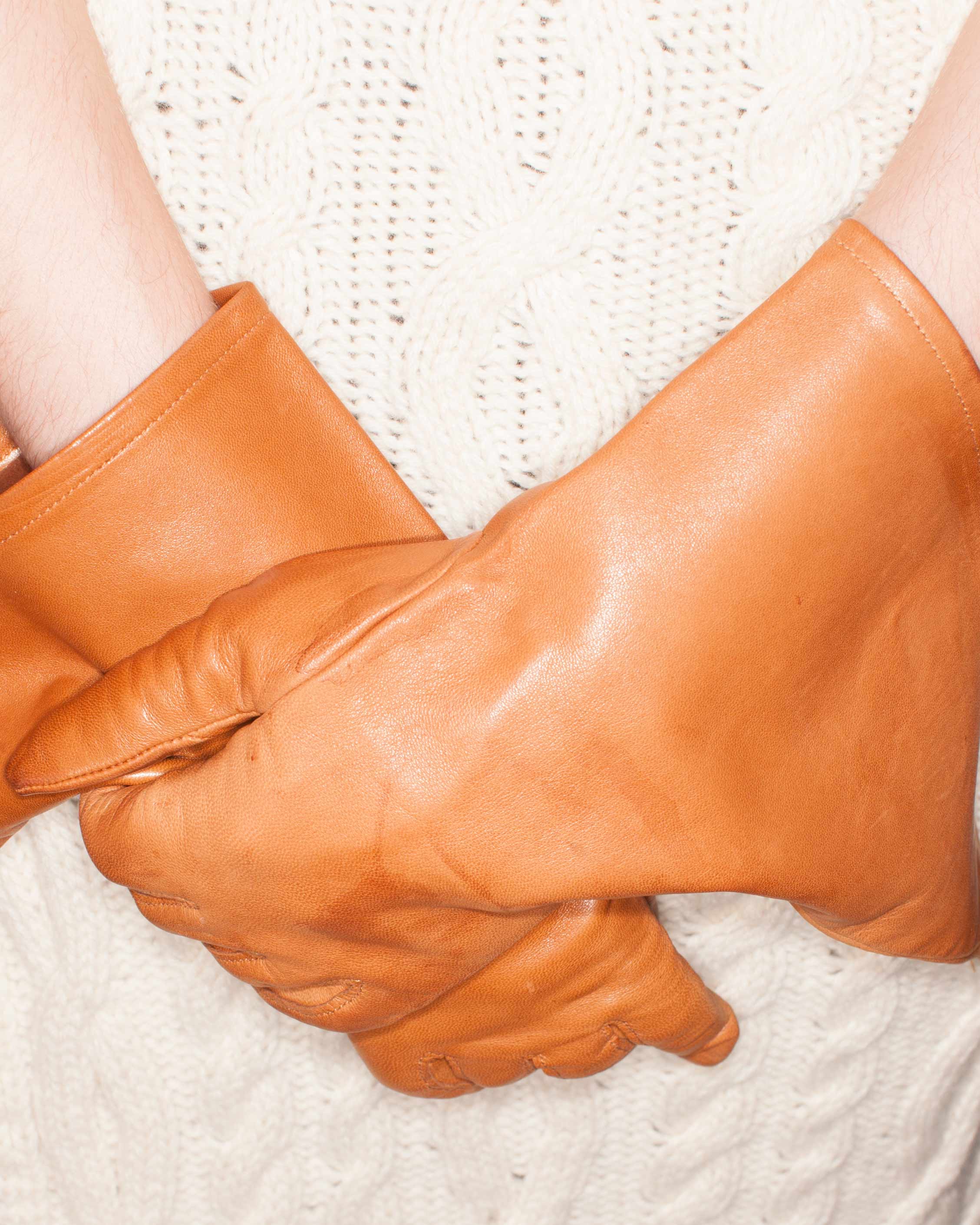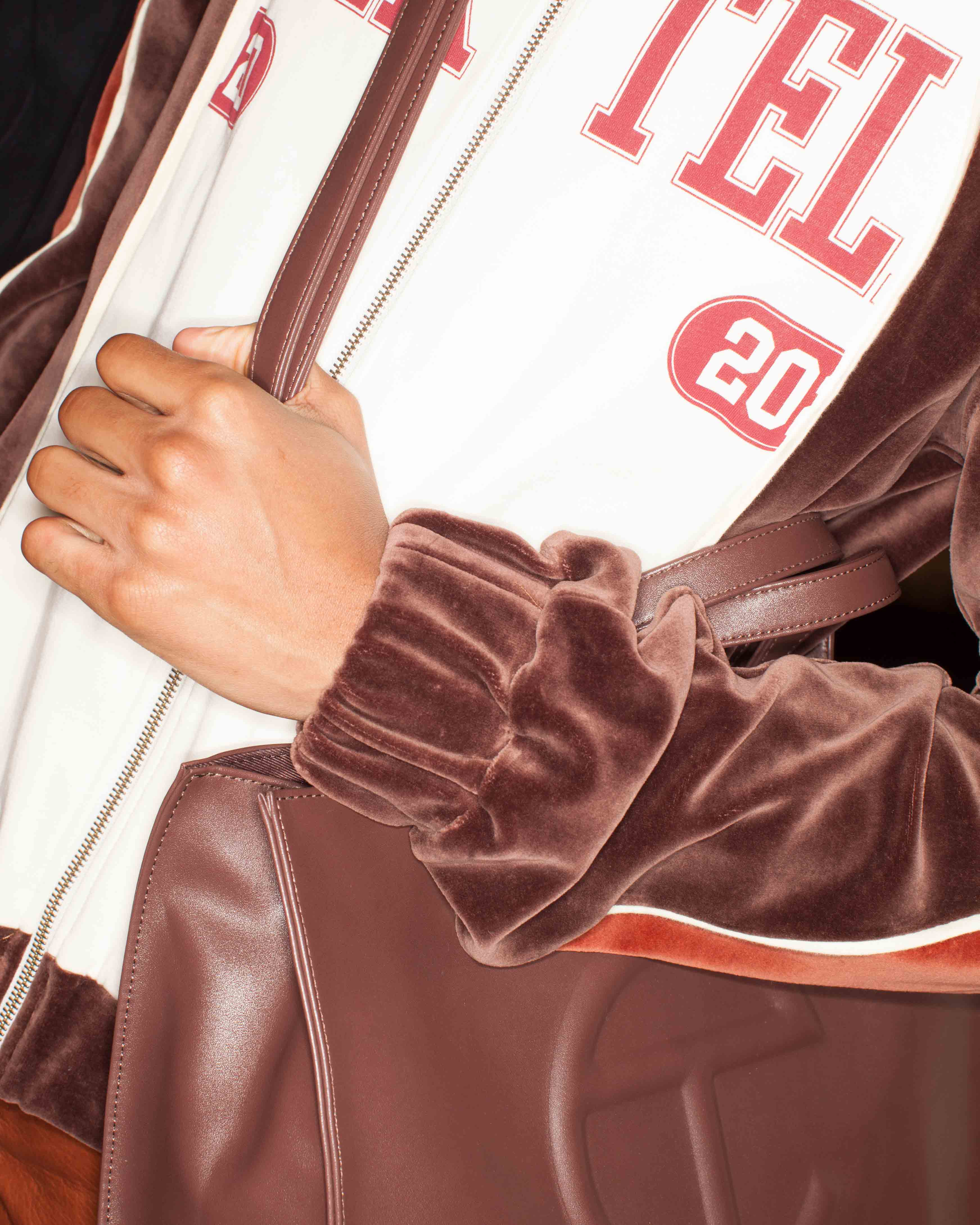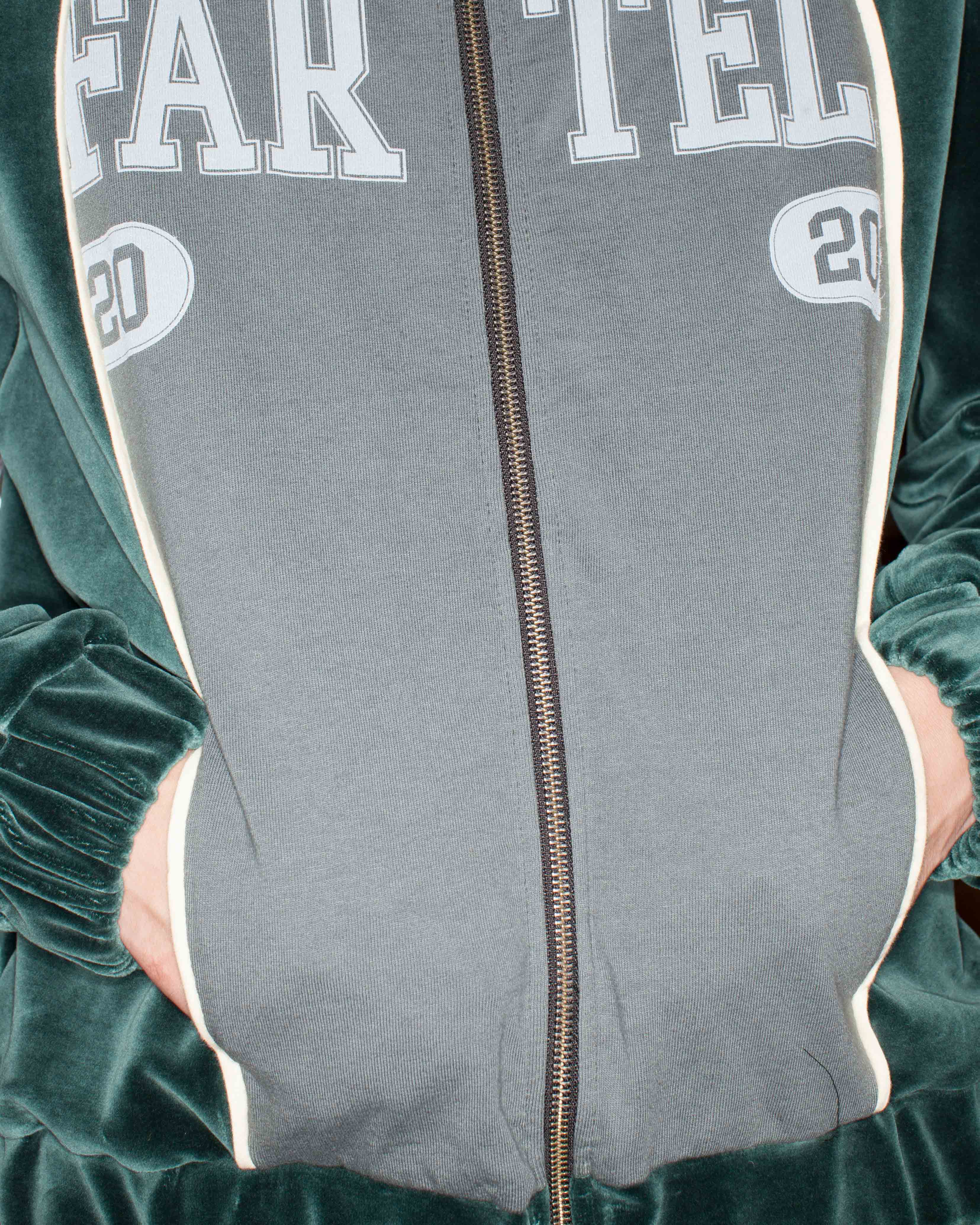Ahead of his Florence show, the designer spoke on his latest collection, the power of kinship, and what he really thinks of the ‘Bushwick Birkin.’
The invite for Telfar Clemens Fall/Winter 2020 show, which takes place on January 9, depicts an illustration inspired by writer Brontez Purnell that, depending on how you look at it, can be startling or funny. The phrase “Blood-Shed” sits beneath two women in simple dresses arguing, pulling each other’s hair, as two shadowy figures try and restrain them. The image leads the viewer to wonder, What are they fighting about? One of the women has a small Telfar Shopping Bag hanging off her shoulder.
The Telfar Shopping Bag is an ubiquitous accessory among the fashion savvy echelons of the creative communities of Bushwick, Brooklyn. Known as the “Bushwick Birkin,” it has an unmistakable logo—a capital T with a C encircling it for designer Telfar Clemens’s initials—embossed on the center of the simple rectangular bag. The bag became a status symbol of sorts for many reasons: it’s affordable (the bags range from $150 to $257, far more affordable than a luxury handbag), it’s minimal, it carries the logo of one of New York’s buzziest designers, and it means that you are part of Telfar’s own secret society.
The Shopping Bag’s popularity has expanded globally, and this week Clemens and his crew of creatives are taking over Florence, Italy, for Pitti Immagine Uomo 97, where, as the Special Project, the Queens-born designer will present his Fall/Winter 2020 collection at Palazzo Corsini. Clemens bridges the Italian Renaissance with New York’s homegrown version, the Harlem Renaissance, merging together the past with his own irreverent future. A description of the collection describes it “like a drunk Medeci daughter on spring break in Ocean City.” The night before the event, Clemens invited a number of his friends, who include Juliana Huxtable, Solange, and Boychild, to come together for a bacchanalian feast by Spiral Theory Test Kitchen—the table became the runway for the show—and party to polish off the show’s happenings. The result: Carrie Stacks on the piano singing alongside Brooklyn-based experimental jazz and hip-hop group Standing on the Corner, fervent moves by Boychild, and a finale that featured a performance by Hawa. The collection featured knit ponchos, Italian Renaissance-style breeches, leather cargo pants, Bushwick Birkins in new colorways, luxe leather puffers, clingy asymmetrical knit dresses, and some slick-ass boots boasting the Telfar logo. Document questioned Clemens, who explained the illustration, why he thinks the Harlem and Italian renaissances were a PR campaign, and what he thinks about the popularity of the “Bushwick Birkin.”
Ann Binlot: What is the illustration on your invite all about?
Telfar Clemens: I think it speaks for itself. All the graphics for the collection (of which this is one) were inspired by an image by the author Brontez Purnell. It’s a Harlem Renaissance-era illustration by Miguel Covarrubias for a book by Zora Neale Hurston—we had a series of these redrawn by hand with the figures dressed in Telfar and accompanied by profanity laced typography.
Ann: Have you been to Florence before? What are your impressions of the city and showing at Pitti Uomo?
Telfar: Not before being invited. It’s dreamy here.
Ann: How did the Italian Renaissance influence your Fall/Winter 2020 collection? How are you fusing it with your aesthetic?
Telfar: We didn’t think it would be a factor but the collection is, like, very renaissance—in a twisted way. We visited Florence days after our last show and the paintings and etchings and sculptures just got into our heads. And also how people in the same clothes you see everywhere just look different in this medieval setting.
Ann: Compare the Italian Renaissance to the Harlem Renaissance.
Telfar: For Italy I think it’s really inspiring when you look at a cathedral and start to understand that there are elements of it that may have been seen as completely tacky at the time. That maybe the word ‘Gaudy’ is a reference to the Divine. That made us want to make clothes that were very romantic but at the same time kind of improper—and to extend that same vibe to the Harlem Renaissance which is so wrapped up in the self-censorship of ‘black excellence.’ We were interested in this line between excellence and indolence.
Ann: What elements do you think need to be in place to create a “renaissance”?
Telfar: Both the Italian and Harlem Renaissance were kind of like PR campaigns. In the case of the Harlem Renaissance it was something imposed from the outside for the most part rather than from the artists themselves. We are living in an era like that right now. Black directors are getting their movies made at a rate that is completely historic; artists getting solo shows; historic black artists see their work suddenly exploding in value after being ignored. Same thing happening to us. This show is really about bypassing these outside narratives and doing our own thing—and also bringing together a group of contemporaries who are part of this moment and doing something together that is essentially withheld from view. You may or may not see or hear anything from the artists we invited for this show. But we will see each other.
Ann: Why did you decide to make the starting point of your Fall/Winter 2020 show a collective gathering?
Telfar: Our shows are always made collectively. We wanted to get to the core of what we are doing and why it’s different—which is not actually what you see on stage but the process. It’s a thing money can’t buy. Friendships and solidarities; constant text messages and conversation—the risks that we take; the trust and kinship. Because I think the fashion industry experiences all of this as a show and can be forgiven for thinking it’s all done for them. It’s not. Our company motto is literally, ‘Not for you, for everyone.’
Ann: You are inviting 30 talents to spend the night at Palazzo Corsini. Who are you inviting? What do you think they’ll bring to the table?
Telfar: We are just inviting people to have dinner. There’s no specific ‘ask’—we are building an all-in-one dinner table / runway / stage and rehearsal space/conversation pit. So that whatever happens, happens. It’s an experiment also in just not planning a show at all, or not privileging the visible part of the show.
There will be a dinner by Spiral Theory Test Kitchen the night before the show. Dinner guests include Solange, Standing on the Corner, Hirakish, Kahlil Joseph, Terrence Nance, Klein, Wu Tsang and Boychild, Elliot Jerome Brown, Hawa, Juliana Huxtable, Total Freedom, Crystalmess, Carrie Stacks… a bunch of people.
Ann: How are you going to manage to get enough rest before your show the next day?
Telfar: It’s basically a bad idea what we are doing!
Ann: What are the challenges of trying to push boundaries at your fashion shows each season, given that so much has been done already in the fashion world?
Telfar: We don’t really think of it in terms of what’s been done. We are following our instincts and it all feels like it’s necessary each season… The challenge is that we are crossing a ton of different creative disciplines and industries and doing it in ways that is wrong in terms of professional norms. So we make films with four directors, songs that are by five people, everyone’s agents are confused, film crews don’t know who is directing, etc. But at the same time the people we work with really respond and understand what we are doing, and I think it’s a relief for a lot of our collaborators. It’s just that there is no boilerplate way to produce these projects.
Ann: How do you feel about your bag being coined the ‘Bushwick Birkin?’ To what do you owe its success?
Telfar: I mean—we are fine with that but it’s not really true. What we are really proud of is getting tagged in the most random cities in, like, Tennessee. We owe its success to the people who buy it—because we don’t do any real marketing for it. People are proud about that bag—it means something to people.
Ann: How will you continue to make Telfar stand out in a world that has too many fashion brands?
Telfar: We are coming on 15 years—we are just going to do what we do. But we would love to find ways of conducting business that are as not-normal as how we do everything else. We want to be a different type of company.
Ann: What’s next for you?
Telfar: You will find out in Paris late this month.





